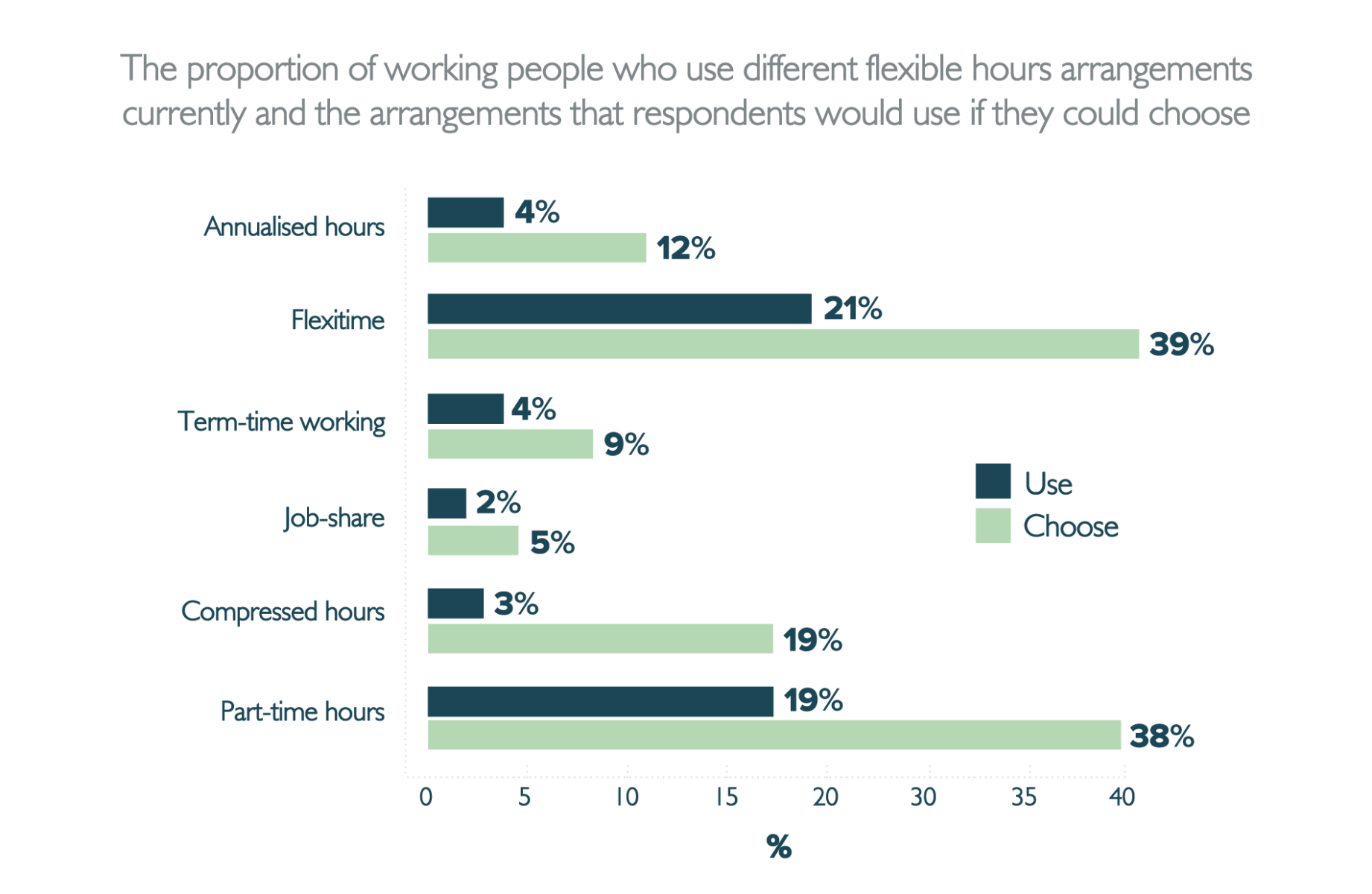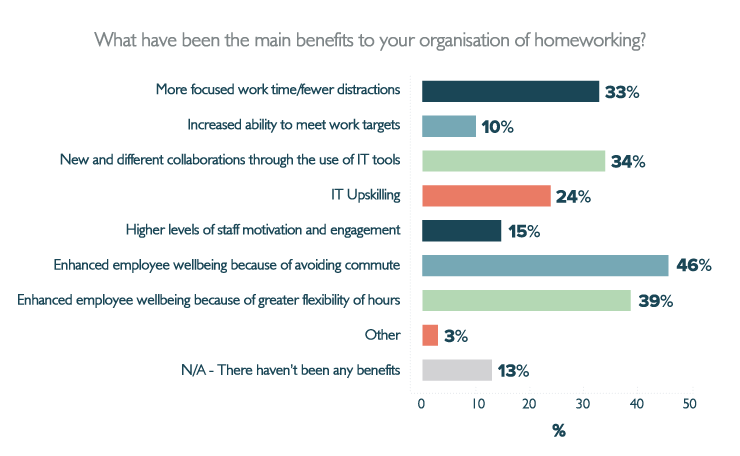CIPD research indicates that mixing home and office working will increase substantially
The nature of the way many of us work has been shaken to its foundations thanks to the pandemic. Perceived barriers have been challenged and overcome with companies rapidly adapting to the need to do things differently. And it turns out these new approaches offer a great deal of potential for the future. In its report “Flexible Working: Lessons from the pandemic – From the ‘nature’ of the work to the design of work” the CIPD examines the impact the pandemic’s had on flexible working and what it is likely to mean for the way employees work in future. It shares some interesting insights into the extent to which hybrid working seems set to become a permanent pattern for many, allowing employees to split their working hours between home and the workplace on a more established basis than the more ad hoc arrangements many employers tended to favor pre-pandemic.
The report draws on a number of sources. Qualitative research was conducted by interviewing 32 senior managers and directors between October 2020 and January 2021. An online YouGov survey obtained the views of 2,133 senior decision-makers in UK organizations. The research also included the views from a CIPD-commissioned YouGov survey of 2,000 employees carried out in January 2021.
There’s a desire for greater flexibility in working hours
Among those employees, it’s apparent that there’s a strong desire for flexibility when it comes to working hour patterns. Employee responses show that there’s a greater demand for all types of flexible hour arrangements across every category in comparison to the actual arrangements being used currently. Flexitime (39%) and part-time hours (38%) lead the way in terms of employee preference. While there appears to be unmet demand when it comes to flexibility over the hours, indications are that employers are responding – for example, almost half of employers are planning to introduce, or increase the use of, flexitime.

The move towards hybrid working
But it seems that the really significant shift identified in this report is the extent to which employers are expecting hybrid working to expand, enabling more employees to work from home some of the time. The survey found that 63% of employers were intending to either introduce it for the first time or increase its use. And the range of views about the benefits and challenges of homeworking help explain why this pattern is about to have its moment.
The homeworking benefits cited most frequently were increased wellbeing, both due to avoiding the commute (46% of survey participants), and greater flexibility of hours (39%). Yet reduced wellbeing due to isolation was identified as the biggest challenge, identified by 44%.

While other benefits included more focused work time and less distractions (33%), 31% said home circumstances were unsuitable. 34% valued the new collaboration opportunities through IT that arose from home working – but on the other hand 15% were frustrated by insufficient technology, 15% by outdated technology and 14% by a lack of staff proficiency with technology. As far as other challenges went, issues were also highlighted about the lack of manager/ employee interactions and what that could mean for managers being able to monitor and support their teams. On the other hand, 71% of survey participants believed that homeworking had not had a detrimental impact on productivity – in fact, 33% of them believed productivity had improved.
What can we conclude from such varying responses?
These illustrate quite how complex the working dynamic can be, and the extent to which they vary from one person to the next. The value people get through being able to spend time in their home environment, working in a more distraction-free way, for example, comes at a cost of a reduced level of interaction with colleagues. Some will be happy with that trade-off, others find it harder.
It explains to a large extent why hybrid patterns are likely to hold such appeal to employers and employees alike. Companies see the opportunity that hybrid working offers, enabling employees to take advantage of the benefits that home working presents while minimizing many of the problems that a total homeworking arrangement could result in.
What can employers do to make a success of hybrid working?
Thanks to the pandemic, lessons have been learned about what works and what doesn’t. Employers are now far better placed to be a lot more informed about the way they move towards a more hybrid version of working. In the report, a number of thoughts were shared about how employers intended to facilitate more homeworking with 45% intending to make formal policy changes, 41% investing in the quality of technology and 35% investing in the quantity of technology. 33% of respondents intend to expand their online guidance. The CIPD makes a number of other recommendations about the key steps employers can consider taking to support a transition towards a hybrid way of working.
Develop skills for open wellbeing conversations
With a reduction in face-to-face time, and an associated reduction of non-verbal cues, managers will have to rely more on verbal interactions. In the research, only 28% of respondents indicated they were planning to carry out training in remote working for managers. But the report suggests this needs to become a bigger part of organizations’ strategies, enabling managers to develop skills to identify and address any wellbeing issues that start to manifest themselves. That includes regular one-to-ones that discuss progress and workload but also non-work issues too, nurturing trust and confidence in sharing wellbeing concerns.
Encourage boundary-setting and routines
Working from home can remove boundaries, as the rhythm of the natural working day is lost. Managers are less able to keep an eye on work overload issues. This can be addressed by training in boundary setting and supporting the creation of working routines. Managers need to be guided on ways to monitor these issues within their teams, setting sensible workloads and checking for any indications of overwork.
Effectively co-ordinate tasks and associated communication
The research showed that remote work might need to be coordinated differently to achieve collective goals. One essential element of this appears to be making sure that objectives are clearly defined and measurable. That needs to be backed up with focused, task-specific communication – more specific than would typically be expected within the workplace.
Decide on an approach to creative tasks
Creative activities like brainstorming and problem-solving can be harder to do remotely. But exploring the functionality of technological solutions could provide a way forward, enabling virtual collaboration to help people do ‘break outs’ and share ideas within the group. Some of this however might depend on the nature of the team and depth of relationships within the given group. Potentially, this could be addressed by making a deliberate choice for creative and collaborative work to be specifically allocated to days in the workplace.
Devote time to building a sense of connection and cohesiveness
Creating team cohesion and engagement in a totally virtual environment isn’t straightforward. But a more blended hybrid approach makes it more achievable. Create a sense of belonging by encouraging frequent visual contact online with peers, even if only for a short period. In the workplace, encourage activities that stimulate more informal relationship-building, perhaps planning patterns to ensure there are at least some occasions when full teams are physically together.
Look for the opportunities it could bring too – large-scale ‘town hall’ meetings with the CEO perhaps. It could offer a way for global team members to feel more included, whereas previously their remote nature made them “the exception”.
Enable networking between teams
Remote working during the pandemic restricted intra-team communications, but in most cases impacted inter-team communication even more. Bumping into a colleague from another department simply didn’t happen anymore. Yet that cross-team interaction is often valuable, not just socially but also for creating opportunities for information sharing and co-working. A hybrid solution could address this to some extent with targeted overlapping of days when specific team interactions could be especially beneficial.
Find ways to compensate for the loss of informal learning
Addressing learning needs is likely to be much easier in a hybrid model than in a full lockdown homeworking situation. But it will still need thinking through. Organizing more structured development opportunities could help, supported by activities such as self-directed coaching and regular feedback. Mixing up of employees on project-based activities could expose them to a wider network and more development opportunities, thanks to fewer limitations due to physical locations.
Designed correctly, hybrid working has real potential
The pandemic experience and lockdown happened so fast, companies had barely any time to prepare. And given that many employees who were suddenly working from home were also dealing with other challenges, such as homeschooling, it’s not been an entirely fair assessment of what can be achieved.
Read more: What will the post-pandemic workplace look like?
But it’s created momentum and understanding. Many organizations might otherwise have taken years to reach the point of embracing this level of flexibility and starting to understand the potential. We’re learning what works well and what could be done better, what needs to be done face-to-face and what is better done in a home environment. By capitalizing on that understanding, organizations have the opportunity to form a blueprint for future working.


 30 ideas to help a new starter in their first week
30 ideas to help a new starter in their first week
 The value of external feedback in the workplace
The value of external feedback in the workplace
 Expand the power of recognition with Partner Appreciation
Expand the power of recognition with Partner Appreciation